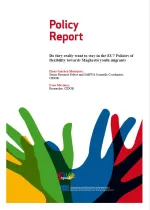Do they really want to stay in the EU? Policies of flexibility towards Maghrebi youth migrants

SAHWA Policy Report nº. 9
The Mediterranean has become a crucial area of passage for both migrants and refugees moving from the South towards the North. During the 1990s and early 2000s, the European Union focused on developing policies that allowed them to handle the arrival of people from the southern Mediterranean countries; now those countries are starting to be treated as areas of transit. On one hand, this is because the flows of people from southern Mediterranean countries have fallen. On the other hand, it is due to a higher number of people arriving from Sub-Saharan Africa and Middle Eastern countries in conflict (Syria, Iraq and Afghanistan, in particular) who get stuck in the countries of the southern and eastern Mediterranean (SEM). The characteristics of migrants coming from these countries have changed over time: they tend to be young people who emigrate alone and are increasingly well qualified, both in terms of their education and training (OECD, 2015).
DOI: doi.org/10.24241/swpr.2017.9.1
E-ISSN: 2564-9159